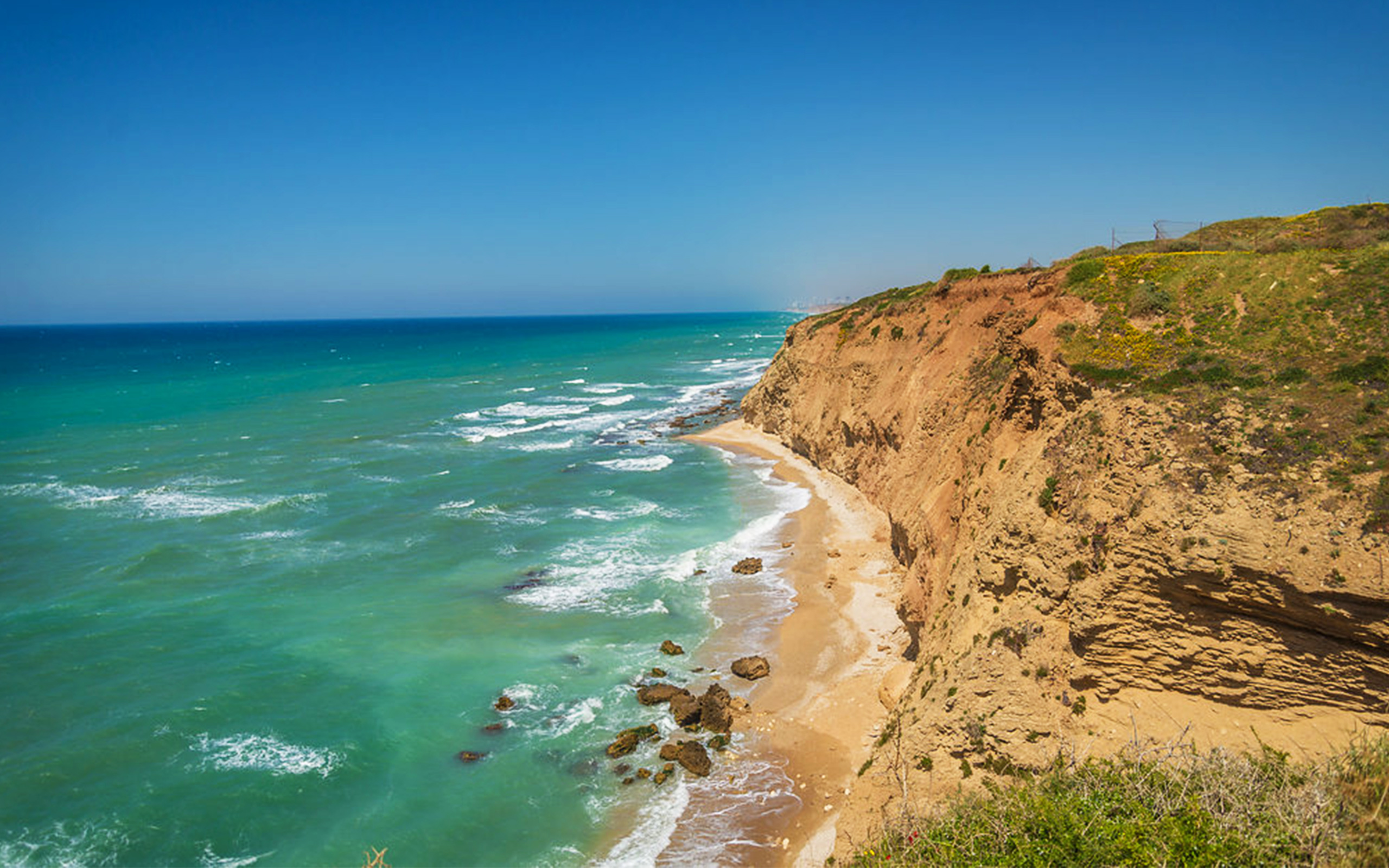
Apollonia-Arsūf: The Past & Future of a Diverse Community

By Dr. Gila Aloni
Diversity, Equity, Inclusion and Belonging Consultant
Apollonia-Arsūf is a strategic space that throughout history has been occupied by diverse groups of people from Jewish, Christian, and Muslim origins. It’s also an archeological site filled with ancient ruins that include stories of the people who owned them at one point or another. But now, it has become a destination for open-air concerts, romantic get-togethers, weddings, festivities, history lessons, and other multifaceted activities. Along with their use for excavation purposes, archeological sites and ruins can tell a story that goes beyond time, and their legacy speaks for the heritage we share. Such is the story of Project Apollonia-Arsūf, with its Crusades-era fortress located on a cliff overlooking the sea and situated on the coastal plain of Sharon, fifteen kilometers north of Tel Aviv. According to the Bible, these lands were allotted to the tribe of Gad (1 Chronicles 5:16). Apollonia-Arsūf includes the remains of a Roman villa located at the entrance to the park. Together with the well-kept 13th-century Sidni Ali Mosque nearby, the site is steeped in a history of battles and conquests for its prized natural sea harbor.
The current national park has had 29 seasons of excavations, and for its 30th, will include a new restoration of the fortress which sits at the North of the site, anchored to the cliff. Currently, the lookout provides picturesque 360-degree views of Caesarea in the north, and Tel Aviv-Jaffa to the south. The Israel Nature & Heritage Foundation of America (INHFA) has established a prominent Tech Advisory Board with leaders across the U.S to support the restoration of the seaside wall and entrance path. Tech Board Chair and CEO of Meetup, David Siegel shared, “This site is unparalleled in historical significance, architectural value, and beauty. It is paramount to restore the seaside wall to provide access for people to enjoy it for generations to come.” Together, the Tech Advisory Board will raise more than $200,000, investing not just capital, but the most valuable resource — time — to restore a site that was a strategic and cultural site for a diversity of people throughout history.
As Helen Keller said, “Alone, we can do so little; together, we can do so much.” The collaboration between tech and environment industry executives, between the U.S. and INHFA, displays the power of community.
The value of Apollonia-Arsūf transcends local attachments and goes back to its original name and cultural heritage. In the late sixth century, the Phoenicians accorded it the name Arsūf after the Canaanite-Phoenician god of fertility and the underworld god, Reshef. The myth surrounding this deity associates it with plague, war, protection, and thunder in the ancient Canaanite religion. During the Hellenistic period, Reshef was identified with the Greek god Apollo, hence the name Apollonia. According to the Britannica Encyclopedia, in Greco-Roman mythology, from the time of Homer onward, Apollo, “was the god of divine distance, who sent or threatened from afar; the god who made men aware of their own guilt and purified them of it; who presided over religious law and the constitutions of cities; and who communicated with mortals through prophets and oracles his knowledge of the future and the will of his father, Zeus.” During the Early Arab period, the town retrieved its original Semitic name: Arsūf. The topographical features of the town, located on a cliff, resonate with the name; in Hebrew, “Ar” means mountain. Therefore, the history of the site suggests that all the various meanings of its name reflect the events that once took place in Apollonia-Arsūf. It was a place to which people arrived from long distances; an area where people fought religious wars, for which some were guilty and others repented.
The archeological excavations, led initially in 1999 by the late Prof. Israel Roll of Tel-Aviv University and followed by his successor, Prof. Oren Tal, exposed portions of the city wall and its eastern gate as well as the remains of the fortress defenses and an ancient Samaritan synagogue. These remains tell a story of Jews, Christians, and Muslims, for whom the conquest of the Mediterranean littoral was invaluable. Thus, learning experience at the site of Apollonia-Arsūf, in accordance with the Emersonian educational philosophy of immersion in a real-world context, becomes authentic, cooperative, and cross-cultural.
The history of this national park dates back two-and-a-half millennia. In the first century B.C.E. the Maccabees, under the Jewish King Alexander Janneus, the second king of the Hasmonean dynasty, took over the town. The Crusaders made their first attempt to capture Apollonia-Arsūf in 1099, but it was only in 1101 that Baldwin I, King of Jerusalem, conquered the city with his army. The Crusaders rebuilt the city’s wall and constructed a fortress on the cliffs overlooking the sea. They made it the capital of the southern Sharon region. However, in 1187 the Crusaders were defeated by the Horns of Hattin, and the Muslims took control of the city. In 1191, during the Third Crusade, after a battle between Richard the Lion Heart’s army and a much larger Muslim army under Salah ed-Din (Saladin), the Muslims were defeated. Apollonia- Arsūf was once again ruled by the Crusaders, who refortified it. Crusader rule came to an end in 1265, after the Mamluk ruler Baibars sieged the city for 40 days. Archaeologists and researchers estimate that nearly 2,000 people crowded in the fortress preparing for food and water storage, among other challenges that the siege imposed. But, tunnels the Mamluks dug compromised the city walls, and the inhabitants, along with the city’s defenders, were surrounded. The remains of the kitchen, including dishes, five stoves for cooking and baking, as well as sinks for dishwashing were displayed in an exhibition that took place in 2011 and curated by Dr. Irit Ziffer with the title, “Last Supper at Apollonia” at the Eretz Israel Museum. The exhibit reconstructed the table of the knights and the defenders of the fortress. As the exhibition site explains, the space is particularly notable in the way it demonstrates the equity with which everyone who was in the dining hall was treated: “No one, not even the commanders, deserved a more elevated seat, better food or more attractive dishes than anyone else.” This moral code is a value of equality that is honored at the present as the place open for public use.
After the battle, the city was eradicated, and it was not resettled for the next several hundred years. However, before the restoration of the site, the British police during the Mandate (1920-1948) used it as a radar post to detect illegal immigrants trying to reach Israel by sea. On November 23, 1945, the British seized and confiscated a ship of refugees trying to reach the land. Two days later, Jewish forces retaliated and bombed the British radar, leaving a significant hole in the building.
I knew none of this history when I spent my childhood’s Shabbats on the beach below the cliff of Apollonia that overlooks the Mediterranean sea. I remember making my way around rocks that led the way down from the fortress to the beach. The cliffs, covered with Murex snails, provided natural shade, and the breeze from the sea made it always cool even during the hot summer days. I am not sure if it is because it was not easily accessible, but it was not a popular beach when I was a child. Now, thanks to the collaboration between tech and environment industry executives and INHFA, a wide and diverse audience — from tourists interested in medieval fortresses and students who wish to learn more about history, to anyone who wants a unique space for social gatherings — can find solace in Apollonia-Arsūf. When a ruin or site is restored for the community’s use, becoming a national park, that ruin outlives the past and obtains new life. This represents the soul of a community that is no longer fighting over the place but is coming together in celebration of heritage and future memories.
Sources:
Alon, Israel National Parks & Nature Reserves, 28
https://www.paljourneys.org/en/timeline/highlight/24444/palestine-police-during-british-mandat
https://www.eisenbrauns.org/books/titles/978-1-57506-747-6.html
